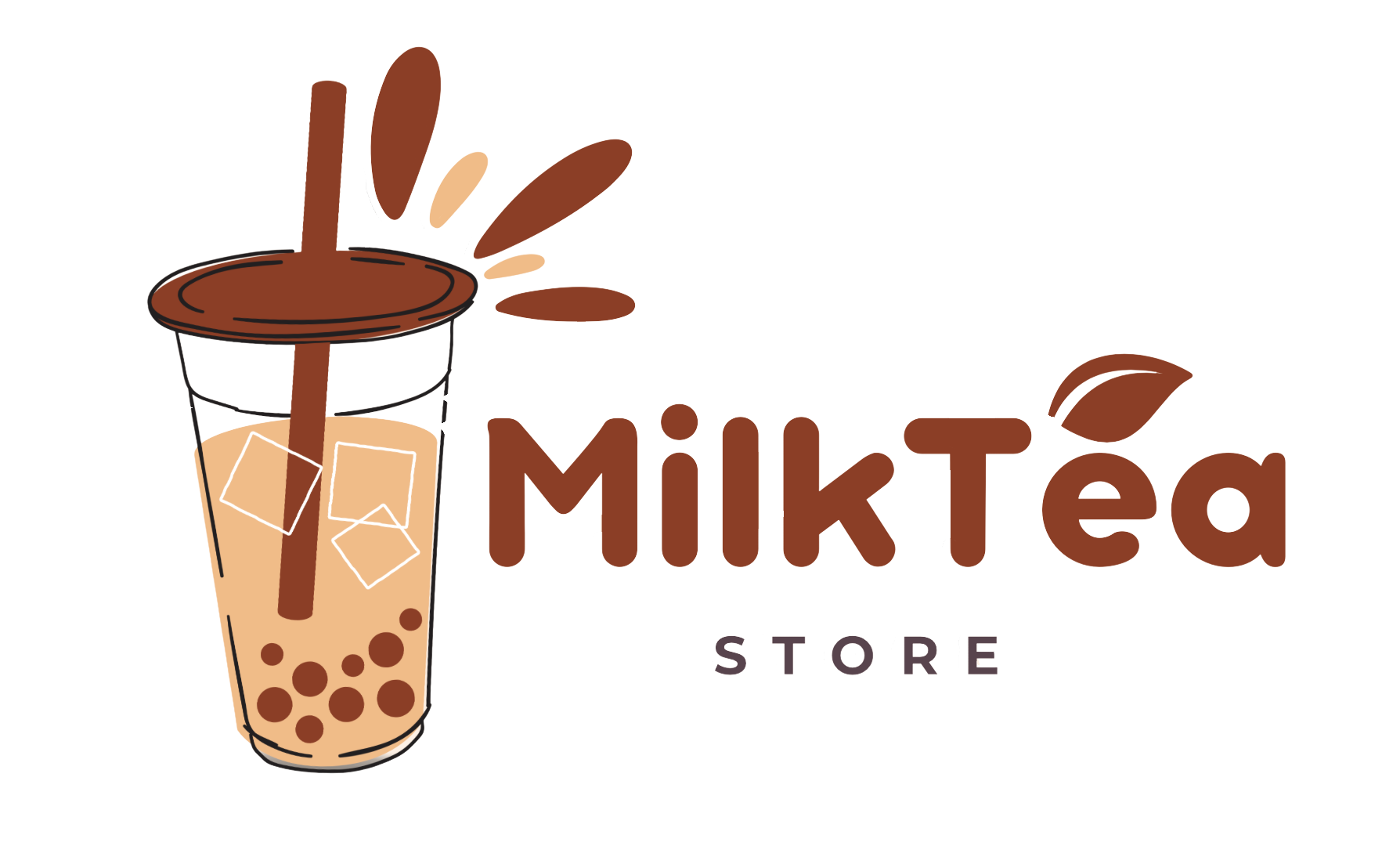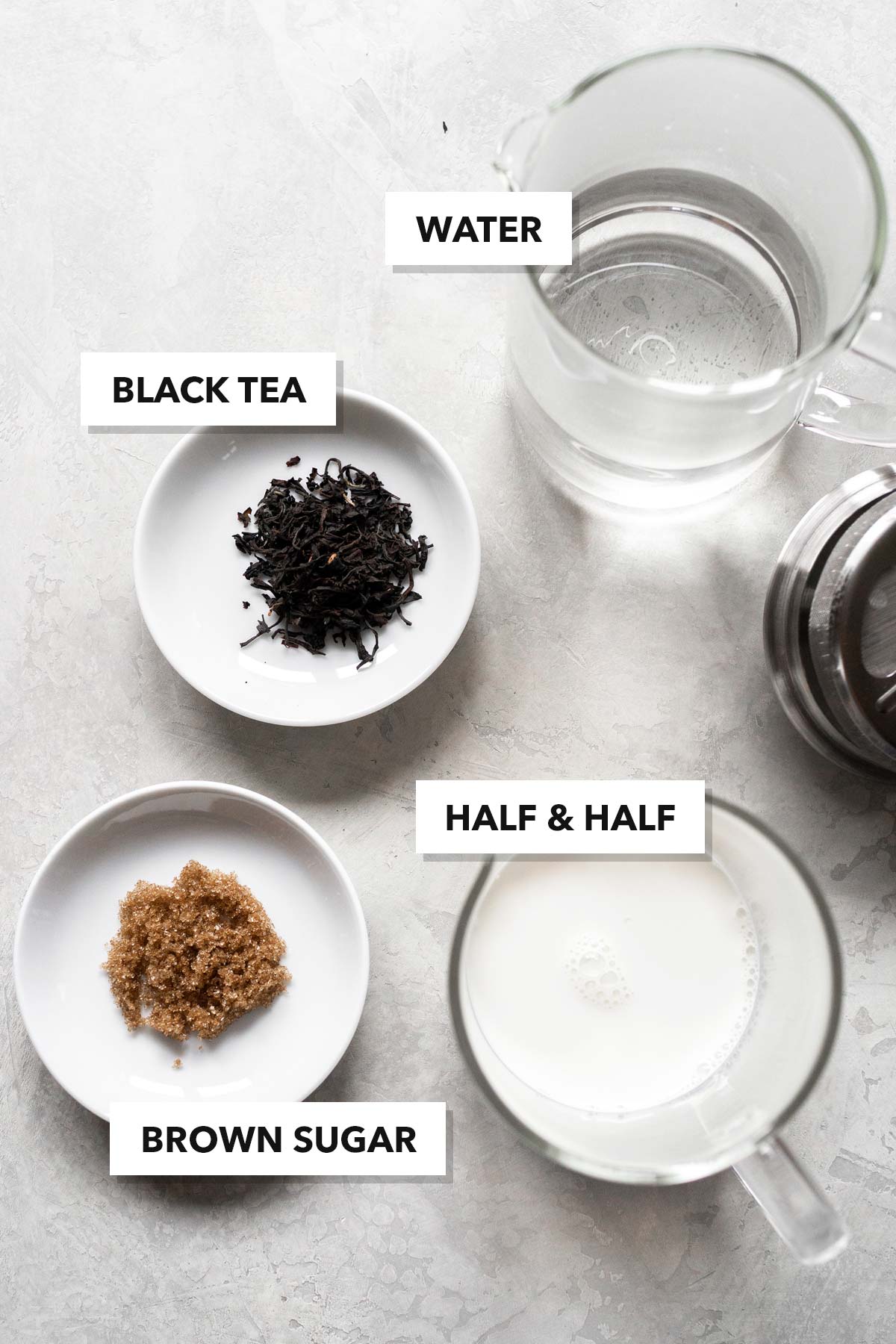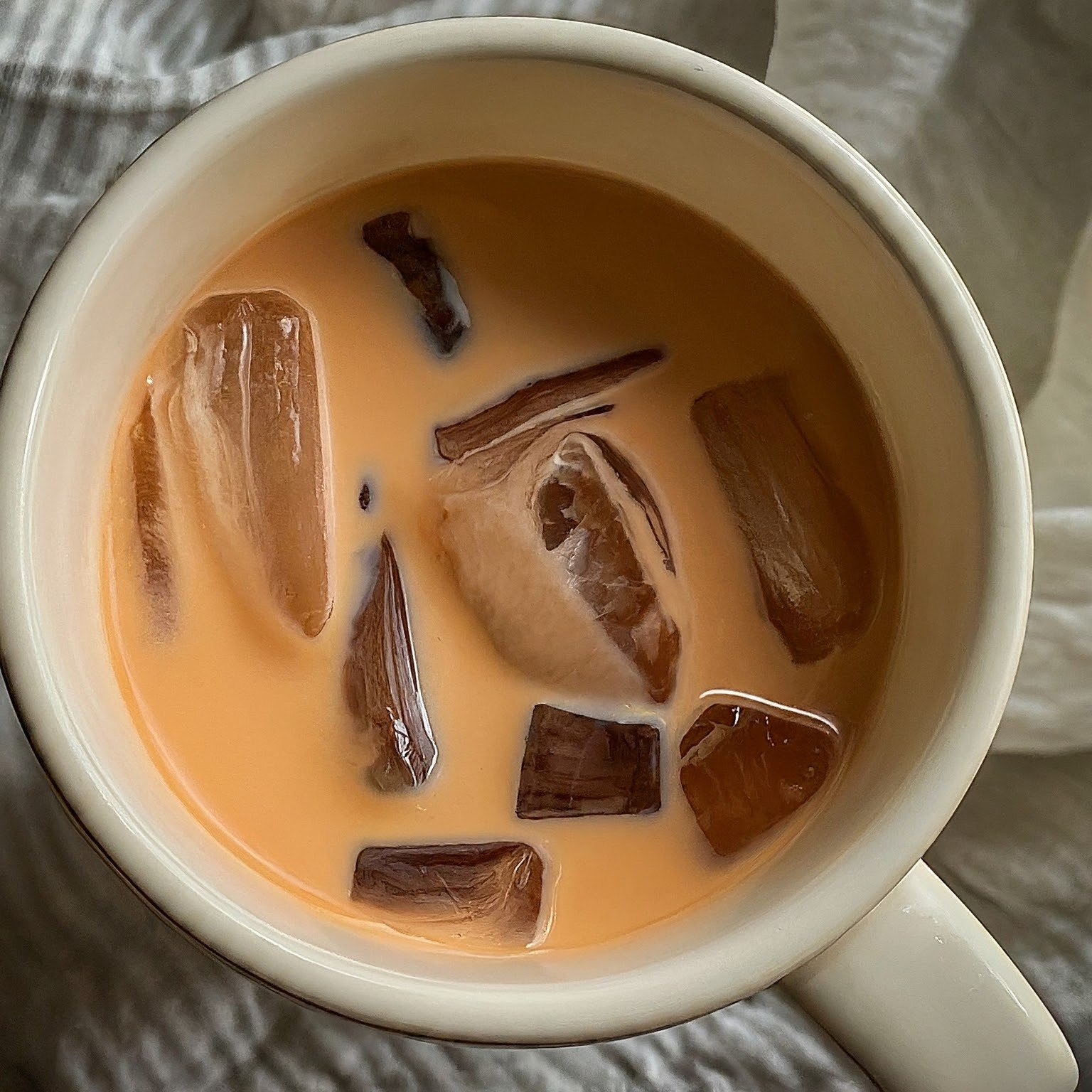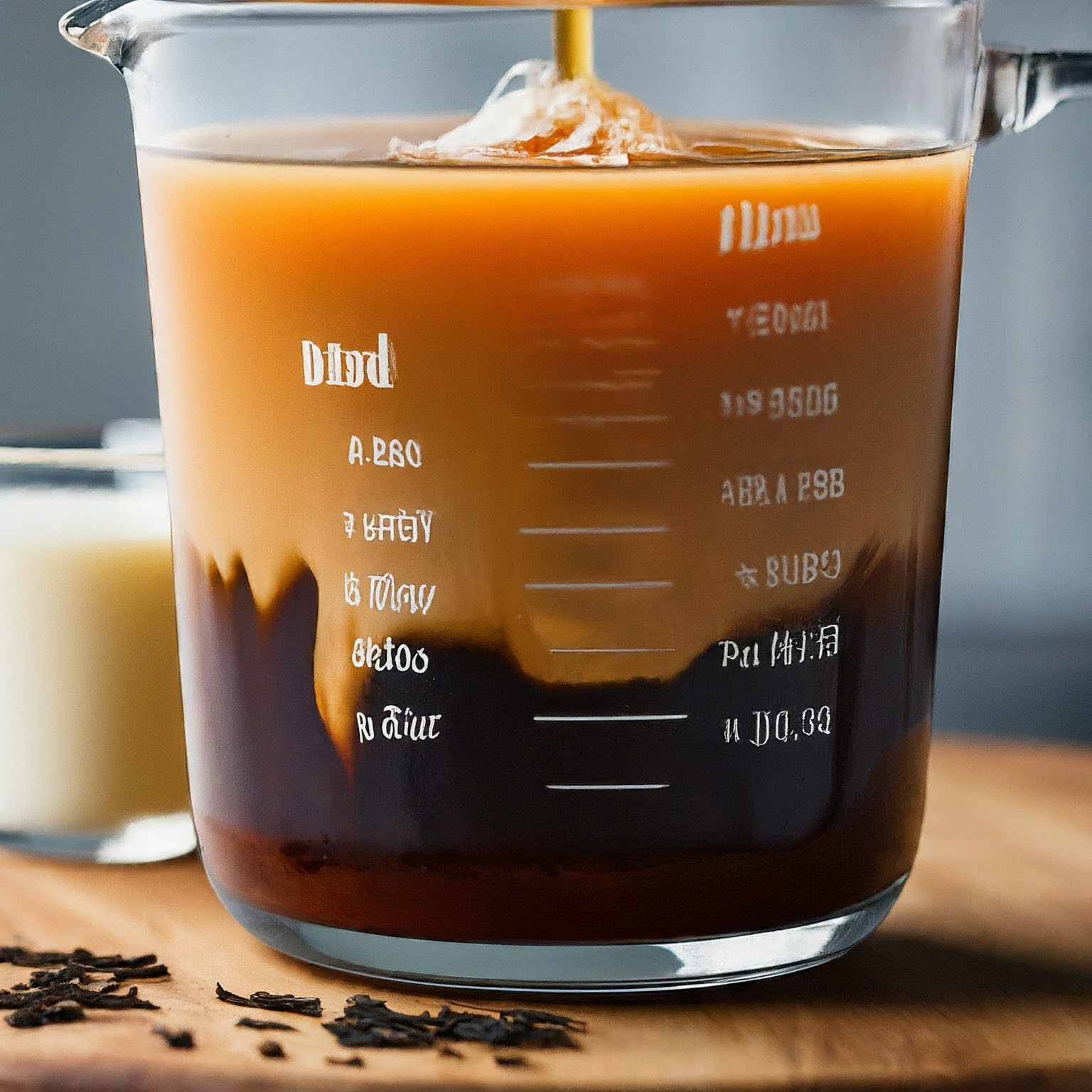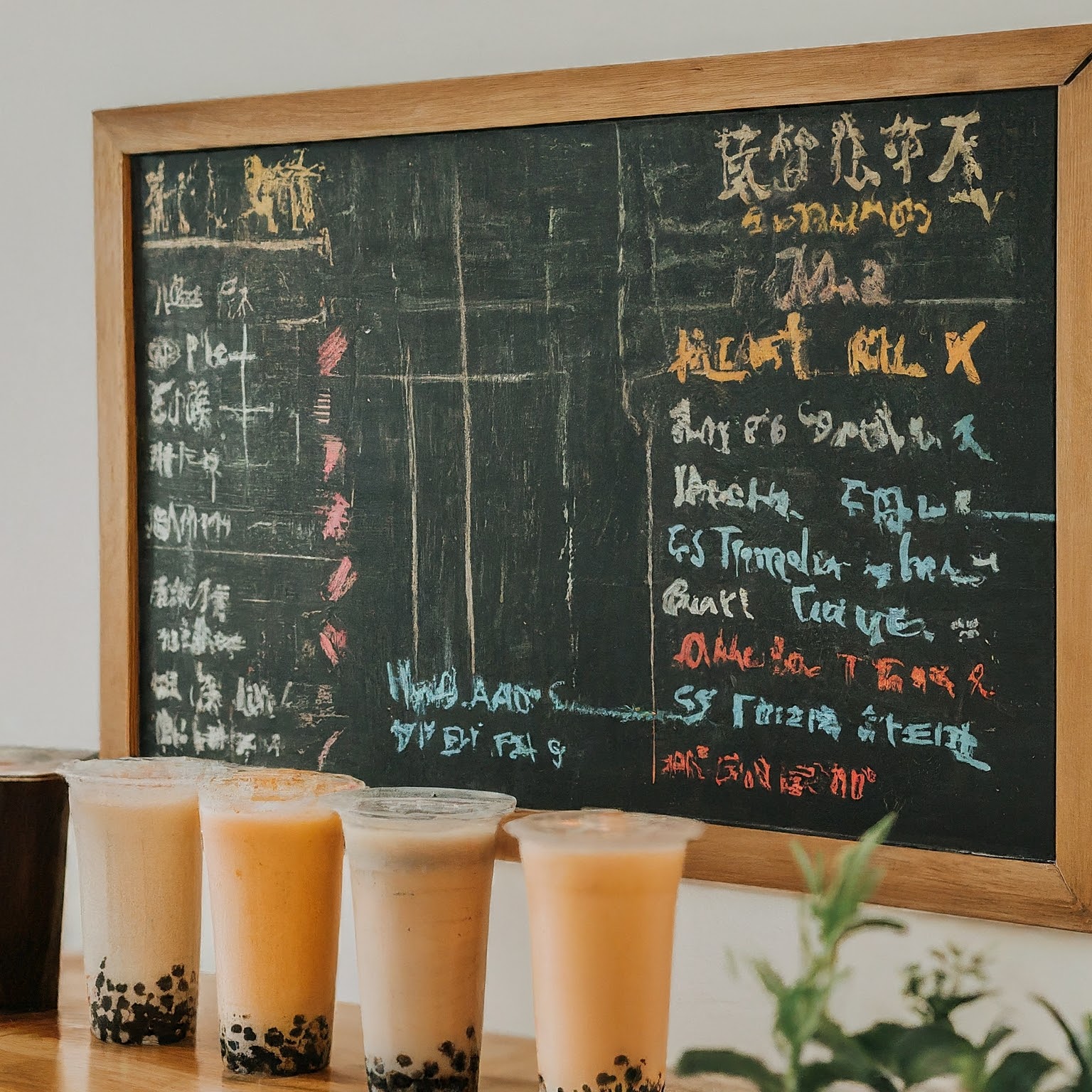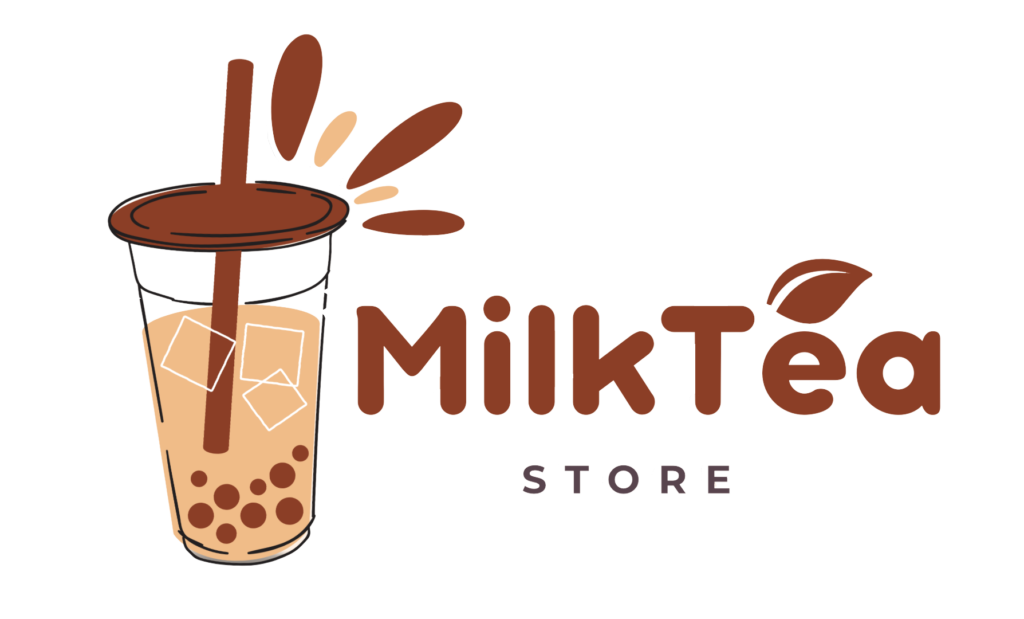Milk tea ratios, typically ranging from 1:2 to 1:4 for tea to milk, are crucial in achieving the desired balance of flavor and creaminess; for instance, the classic Taiwanese bubble milk tea often employs a 1:2 ratio, while Hong Kong-style milk tea leans towards 1:1.5, with variations influenced by regional preferences and the type of tea used, highlighting the significance of ratios in crafting the perfect milk tea experience.
The Science Behind Milk Tea Ratios: Creating the Perfect Blend Every Time
Milk tea, also known as bubble tea or boba tea, has become increasingly popular in recent years. Originating from Taiwan in the 1980s, milk tea has now gained a global following, with countless variations and flavors available. What makes milk tea so unique is the combination of both art and science that goes into its making.
The art of milk tea lies in the creativity and skill of the person making it. From choosing the right ingredients to creating visually appealing presentations, there is an artistic element to milk tea that cannot be overlooked.
On the other hand, the science of milk tea involves understanding the chemical reactions and processes that occur during its preparation. Factors such as ratios, steeping time, water temperature, and even the type of milk used can greatly impact the flavor and texture of the final product.
The Importance of Ratios in Milk Tea Making
One of the key aspects of milk tea making is getting the ratios right. The ratio of tea to milk to sweeteners can greatly affect the overall taste and balance of flavors in the drink. Too much tea can result in a bitter taste, while too much milk can make it overly creamy. Similarly, too much sweetener can overpower the other flavors.
The ideal ratio for milk tea is typically 1:3:1, meaning one part tea, three parts milk, and one part sweetener. This ratio allows for a balanced flavor profile where the tea is not overpowering, the milk adds creaminess, and the sweetener provides a touch of sweetness. However, it’s important to note that these ratios can vary depending on personal preference and the type of milk tea being made.
The Role of Tea Leaves in Milk Tea Flavor
Tea leaves play a crucial role in determining the flavor profile of milk tea. Different types of tea leaves have distinct flavors and aromas, which can greatly impact the final taste of the drink. For example, black tea leaves tend to have a stronger and bolder flavor, while green tea leaves have a more delicate and grassy taste.
In addition to the type of tea leaves used, the quality and freshness of the leaves also play a role in the flavor. Higher quality tea leaves will generally result in a more flavorful and aromatic milk tea. It’s important to choose tea leaves that are suited to your personal taste preferences and desired flavor profile.
| Tea Type | Typical Flavor Profile | How it Works with Milk | Common Milk Tea Uses |
|---|---|---|---|
| Black Tea(Assam, Ceylon, etc.) | Bold, malty, robust, sometimes slightly astringent | Stands up well to milk and sweeteners, provides a strong base | Classic milk tea, masala chai, flavored milk teas |
| Oolong Tea | Range from floral & light to toasty & rich | Varies – lighter oolongs may be overpowered by milk, darker oolongs can work well | Often used for specialty milk teas, pairs well with fruity or floral flavors |
| Green Tea | Grassy, vegetal, slightly sweet | Best with less milk or alternative milks, as milk can overpower the delicate flavors | Matcha lattes, lighter and fresher milk teas |
| Pu-erh Tea | Earthy, woody, sometimes slightly sweet or musty | Creates a unique, strong-flavored milk tea | Not as common, but offers an interesting, bold milk tea experience |
The Different Types of Milk Used in Milk Tea
The type of milk used in milk tea can greatly affect both the flavor and texture of the drink. There are several options to choose from, including dairy milk, non-dairy milk alternatives such as almond or soy milk, and even creamer.
Dairy milk is often preferred for its creamy texture and rich flavor. It adds a smoothness to the milk tea that is hard to replicate with non-dairy alternatives. However, for those who are lactose intolerant or prefer a non-dairy option, there are plenty of alternatives available. Non-dairy milks can provide a different flavor profile and texture to the milk tea, adding a nutty or creamy element depending on the type of milk chosen.
| Type of Milk | Flavor | Creaminess | Sweetness | Additional Considerations |
|---|---|---|---|---|
| Whole Milk | Rich, slightly sweet | Very creamy | Natural sweetness | Classic choice, adds significant richness |
| 2% Milk | Milder flavor | Medium creaminess | Slightly sweet | Balanced option, less rich than whole milk |
| Skim Milk | Neutral, watery | Less creamy | Not sweet | Low-fat, but provides less texture |
| Oat Milk | Naturally sweet, nutty undertones | Creamy (depends on brand) | Mild sweetness | Good vegan alternative, can foam well |
| Almond Milk | Subtle nutty flavor | Less creamy | Unsweetened (usually) | Another vegan alternative, very light texture |
| Soy Milk | Bean-like flavor | Creamy | Can be sweet or unsweetened | Creamy vegan option, flavor can be assertive |
| Coconut Milk | Rich, coconutty | Very creamy | Naturally sweet | Distinct flavor, best with tropical-themed teas |
| Condensed Milk | Very sweet, caramel notes | Thick and creamy | Extremely sweet | Used for distinct flavor in specific milk tea styles (ex: Hong Kong Milk Tea) |
The Science of Steeping Tea Leaves for Milk Tea
Steeping tea leaves is a crucial step in milk tea making that requires an understanding of the science behind it. Steeping involves extracting the flavors and aromas from the tea leaves by allowing them to soak in hot water.
The ideal steeping time and temperature can vary depending on the type of tea leaves being used. Generally, black tea leaves require a longer steeping time at a higher temperature, while green tea leaves require a shorter steeping time at a lower temperature. Oversteeping or using water that is too hot can result in a bitter taste, while understeeping or using water that is too cool can result in a weak and flavorless milk tea.
The Significance of Water Temperature in Milk Tea Making
Water temperature is another important factor to consider when making milk tea. The temperature at which the tea leaves are steeped can greatly impact the flavor and aroma of the final product.
Different types of tea leaves require different water temperatures for optimal extraction. For example, black tea leaves generally require water that is around 200°F (93°C), while green tea leaves require water that is around 175°F (79°C). Using water that is too hot can result in a bitter taste, while using water that is too cool can result in a weak and flavorless milk tea.
The Effect of Sweeteners on Milk Tea Flavor
Sweeteners play a crucial role in balancing the flavors of milk tea. They add a touch of sweetness that can enhance the overall taste of the drink. There are several types of sweeteners that can be used in milk tea, including sugar, honey, agave syrup, and flavored syrups.
The type and amount of sweetener used can greatly impact the flavor profile of the milk tea. Some people prefer a sweeter milk tea, while others prefer a more subtle sweetness. It’s important to experiment with different sweeteners and adjust the amount to find the perfect balance for your taste preferences.
The Science of Milk Frothing for Milk Tea
Milk frothing is a technique used to create a creamy and frothy texture in milk tea. It involves incorporating air into the milk to create small bubbles, resulting in a light and velvety texture.
There are several methods of milk frothing, including using a steam wand on an espresso machine, using a handheld frother, or even shaking the milk vigorously in a sealed container. Each method has its own effect on the texture and flavor of the milk tea. For example, using a steam wand can create a dense and creamy foam, while shaking the milk vigorously can create a lighter and frothier texture.
The Impact of Ice on Milk Tea Flavor and Texture
Ice is often added to milk tea to create a refreshing and chilled drink. However, it’s important to consider the impact that ice can have on the flavor and texture of the milk tea.
Adding ice to milk tea can dilute the flavors, making it taste weaker than intended. It can also affect the texture, making it watery or thin. To avoid this, it’s important to find the right balance between ice and milk tea. The ideal ice-to-milk-tea ratio can vary depending on personal preference and the type of milk tea being made.
The Role of Toppings and Mix-Ins in Milk Tea Blends
Toppings and mix-ins are a popular addition to milk tea blends, adding texture and flavor to the drink. There are countless options to choose from, including tapioca pearls (boba), fruit jellies, pudding, grass jelly, and even ice cream.
Toppings and mix-ins can greatly enhance the overall experience of drinking milk tea. They add a chewy or creamy element that complements the smoothness of the milk tea. The choice of toppings and mix-ins can vary depending on personal preference and the desired flavor profile.
Achieving the Perfect Milk Tea Ratio
In conclusion, milk tea making is both an art and a science. It requires creativity and skill to create visually appealing presentations, while also understanding the chemical reactions and processes that occur during its preparation.
Achieving the perfect milk tea ratio involves finding the right balance between tea, milk, sweeteners, and other ingredients. Experimentation is key to finding the ideal ratios that suit your personal taste preferences. By understanding the role of each ingredient and considering factors such as steeping time, water temperature, and ice-to-milk-tea ratio, you can create a milk tea that is perfectly balanced in flavor and texture.
Whether you prefer a classic milk tea or a unique blend with toppings and mix-ins, the art and science of milk tea making allows for endless possibilities. So go ahead, unleash your creativity and enjoy the process of creating your own perfect cup of milk tea.
Originally posted 2024-04-14 03:18:34.
